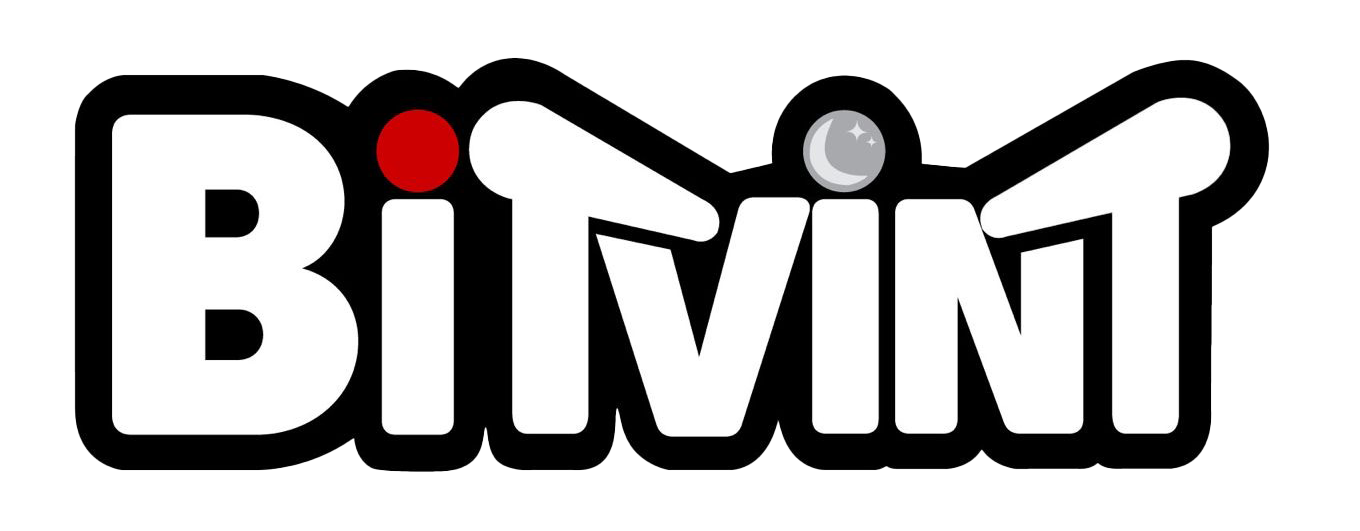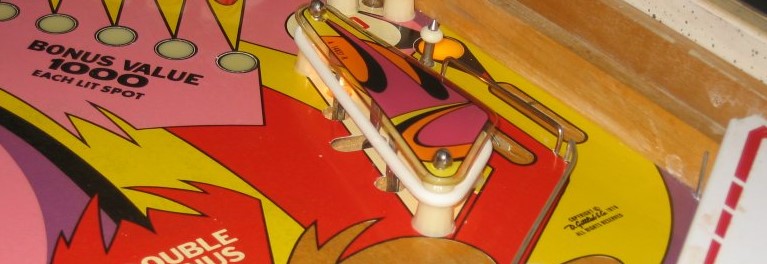Introduction
Gottlieb is one of the most legendary names in pinball history, synonymous with quality craftsmanship and groundbreaking designs. Founded in 1930 by David Gottlieb, the company began as a maker of coin-operated amusements and later became a trailblazer in the world of pinball machines. From timeless electro-mechanical classics to innovative solid-state designs, Gottlieb has left a lasting impact on the arcade and pinball industries.
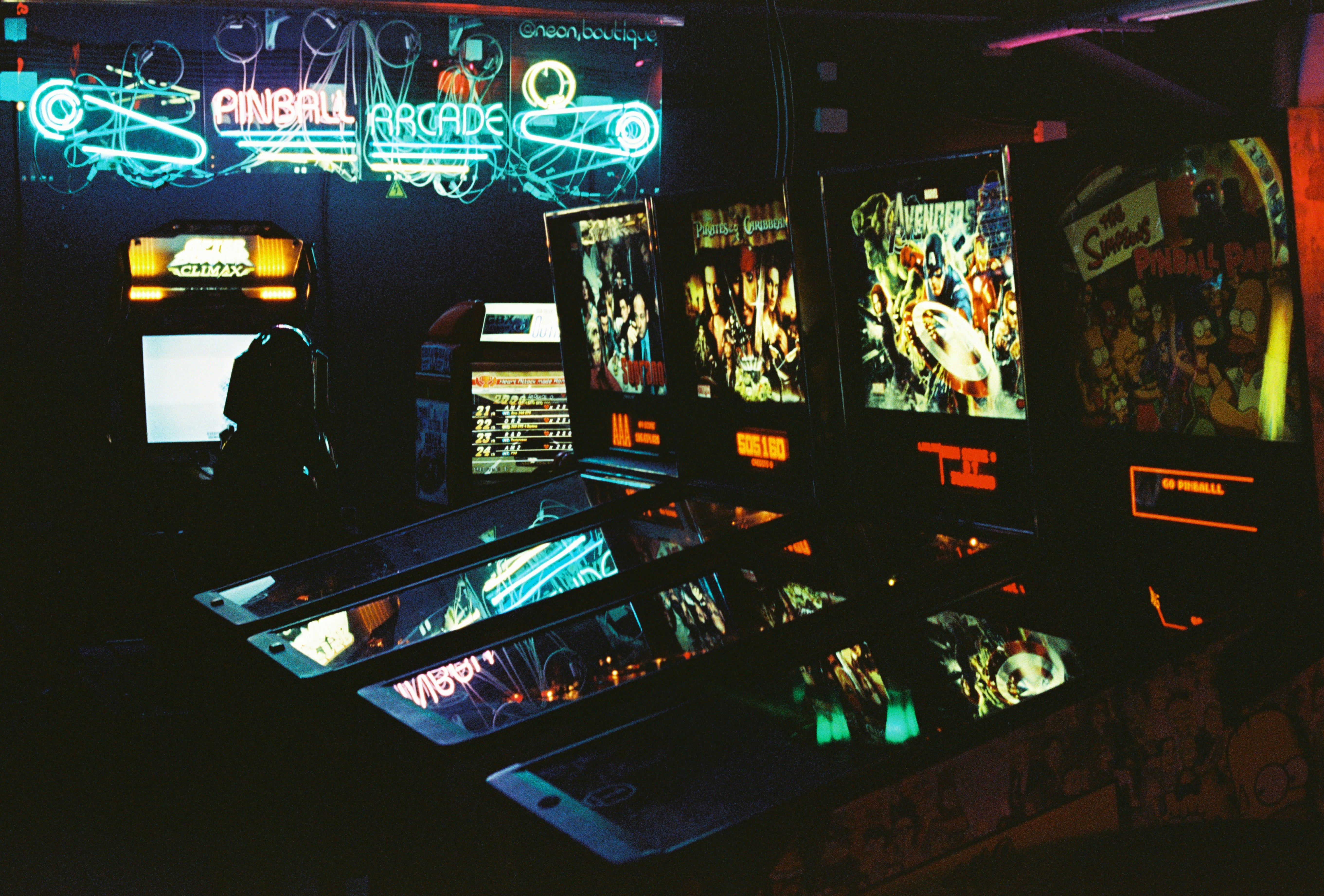
Early History and Founding
David Gottlieb founded Gottlieb & Co. in 1930 in Chicago, Illinois, a city that would become the heart of pinball manufacturing. The company’s first major success was Baffle Ball (1931), which became immensely popular during the Great Depression.
By the 1940s and 1950s, Gottlieb had established itself as one of the premier pinball manufacturers, focusing on electro-mechanical machines that combined art, engineering, and entertainment. Their machines became fixtures in arcades, bars, and amusement parks worldwide.
Key Innovations and Contributions
Gottlieb was responsible for many innovations that shaped the pinball industry:
- Flippers (1947): Introduced the first player-controlled flippers with Humpty Dumpty, transforming pinball from a game of chance to a skill-based game.
- Add-a-Ball Feature (1956): Allowed players to earn extra balls instead of free games, making machines legal in areas where free games were banned.
- Digital Displays and Sounds (1977-1980s): Transitioned from electro-mechanical to solid-state technology, keeping pace with the industry’s modernization.
- Wide-Body Designs (1979): Provided more expansive playfields with complex designs for deeper gameplay experiences.
Watch the fascinating video below to learn more about the history and games of Gottlieb (Youtube video by Kim Justice)
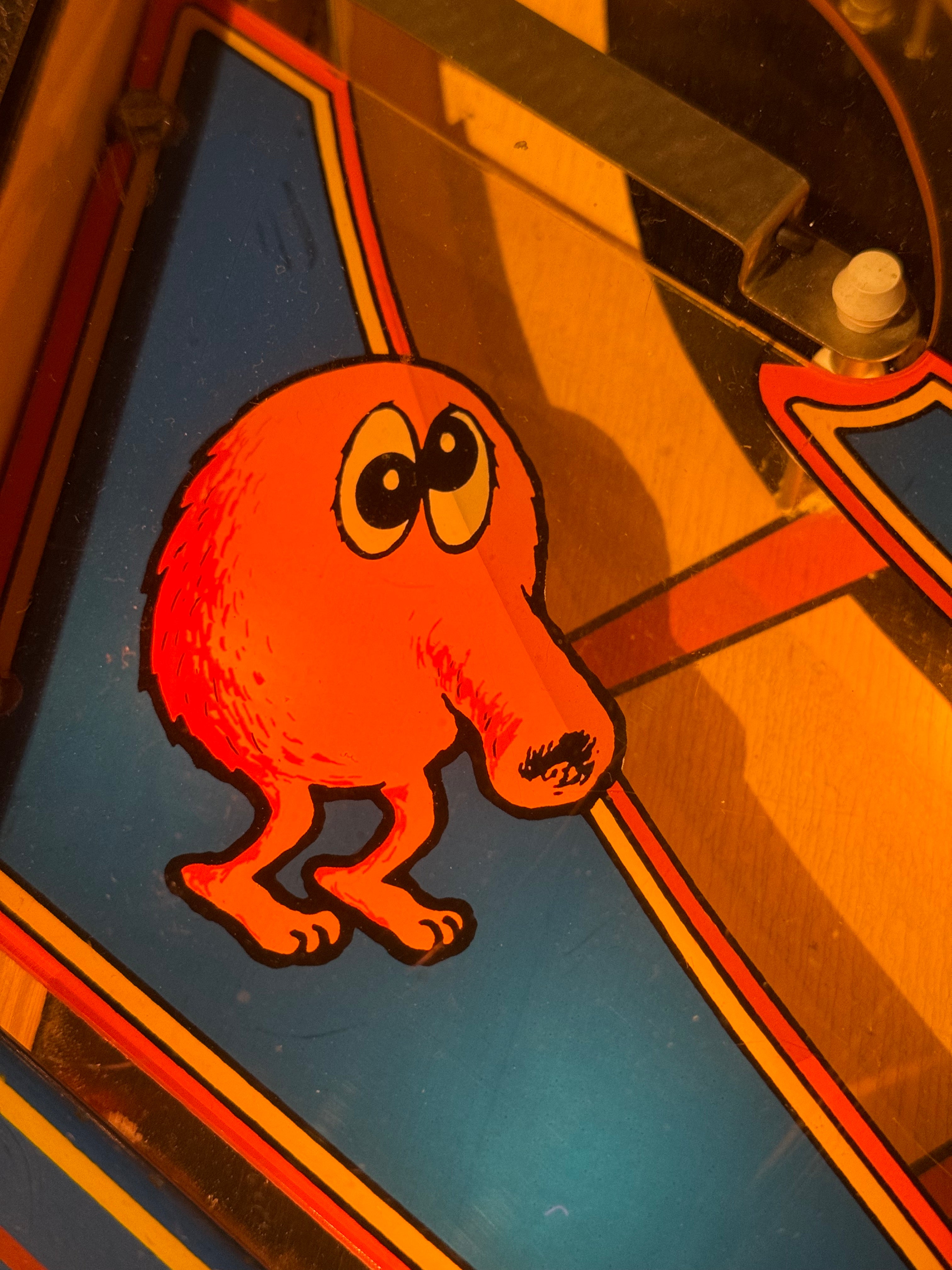
Video
Notable Games
Gottlieb produced some of the most iconic pinball machines in history, many of which are still highly sought after by collectors today.
Electro-Mechanical Classics:
- Humpty Dumpty (1947): The first pinball machine to introduce flippers, revolutionizing gameplay and turning pinball into a skill-based game.
- King of Diamonds (1967): A visually striking machine with challenging gameplay, still popular among vintage collectors.
- Central Park (1966): Known for its whimsical theme and challenging shots.
Solid-State Innovations:
- Black Hole (1981): Famous for its dual-level playfield and mesmerizing design, it was one of the first talking pinball machines.
- Haunted House (1982): Featured three playfields, a groundbreaking design that remains unique in pinball history.
- Devil’s Dare (1982): Among the early machines to feature multiball play, adding depth and excitement.
- Q*bert's Quest (1983): Based on the popular arcade game Qbert*, this pinball machine featured vibrant artwork and gameplay reflecting the video game’s unique mechanics.
- Cue Ball Wizard (1992): A billiards-themed machine showcasing Gottlieb’s mastery in integrating themes with gameplay.
Gottlieb's Transition and Legacy
In 1976, Gottlieb was sold to Columbia Pictures and later passed through various owners, including Mylstar Electronics and Premier Technology. Despite changing ownership, Gottlieb continued producing high-quality pinball machines into the 1990s before closing its pinball division in 1996.
Today, Gottlieb machines are celebrated as collector’s items and restoration projects, with many enthusiasts preserving their legacy. Games like Haunted House and Black Hole remain highly valued for their innovation and gameplay complexity.
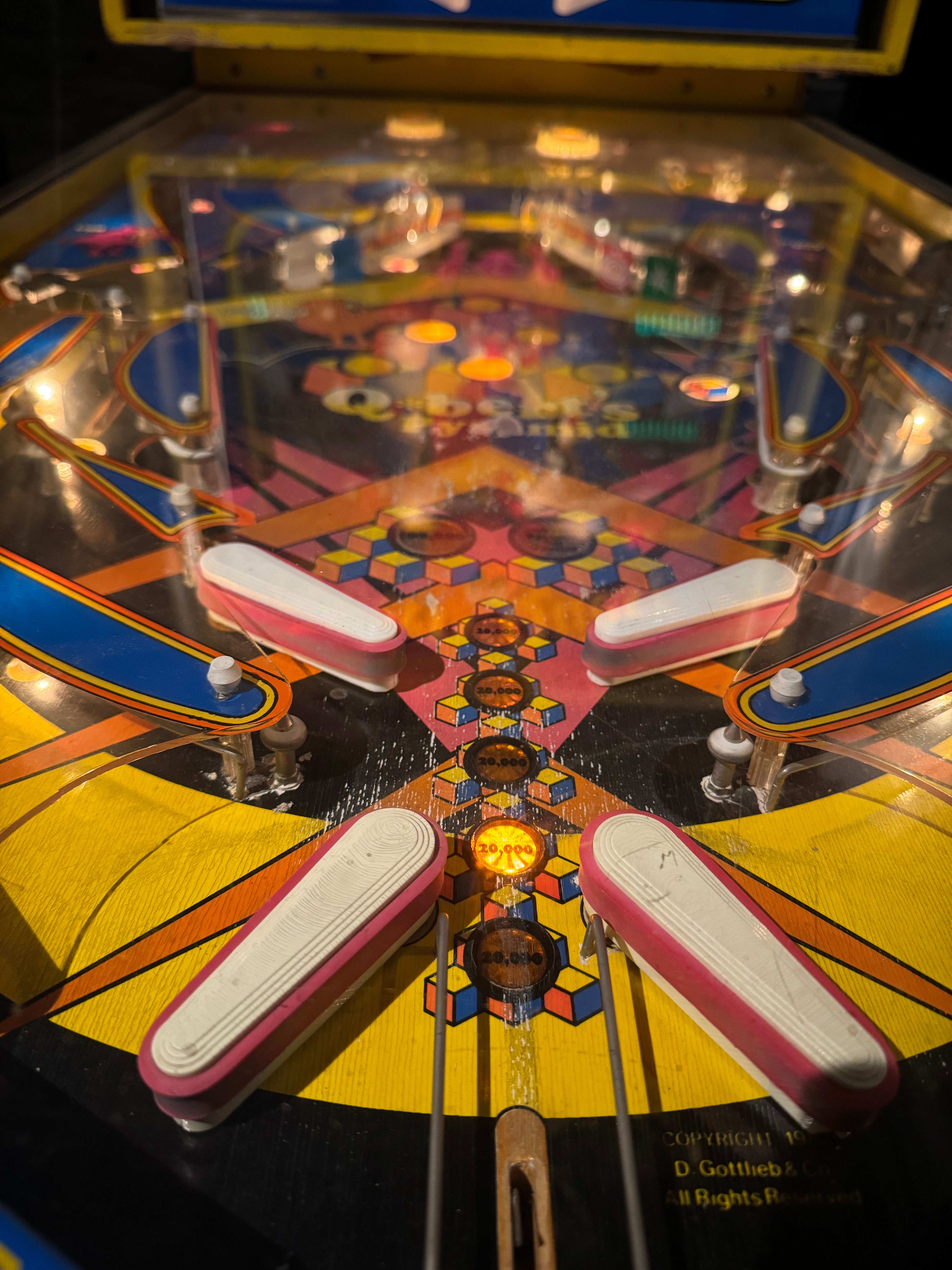
Why Gottlieb Remains Iconic
- Pioneering Designs: Introduced the flipper, multiball modes, and multi-level playfields.
- Timeless Gameplay: Balanced fun with skill-based mechanics, making their machines accessible yet challenging.
- Art and Aesthetics: Known for stunning artwork and vibrant designs that defined pinball’s visual style.
Explore More Brands
Learn more about other legendary arcade and pinball brands:
Want to learn more about Gottlieb? Check out these sources:
- Gottliebpin.com's take on the history of Gottlieb.
- Pinside's overview of all Gottlieb games.
- Wikipedia's page on Gottlieb.
Questions you might have:
What were some of the earliest pinball machines produced by Gottlieb?
Some early pinball machines by Gottlieb include "Baffle Ball" (1931) and "Baffle Ball Junior" (1932).
What happened to Gottlieb?
Gottlieb, a prominent pinball manufacturer with a rich history, faced various challenges that ultimately led to its closure in the late 1990s. In 1983, Gottlieb was acquired by the Columbia Pictures Entertainment division of The Coca-Cola Company. However, by the late 1980s, the pinball industry was facing significant competition from video games and other forms of entertainment. The company underwent ownership changes, with Premier Technology taking control in 1989.
Despite efforts to adapt and innovate, including the introduction of licensed themes and innovative features, Gottlieb struggled financially. The decline of the arcade industry and the rise of video games further impacted pinball sales. In 1996, the pinball division was officially closed, marking the end of Gottlieb's pinball manufacturing legacy.
How did Gottlieb contribute to the evolution of pinball technology and gameplay mechanics?
Gottlieb introduced innovations like flipper buttons, mechanical animation, and the first multi-player pinball machine, advancing pinball technology.
What are some of the most iconic and popular pinball machines created by Gottlieb?
Iconic Gottlieb pinball machines include "Humpty Dumpty" (1947), "King of Diamonds" (1967), and "Black Hole" (1981).
What was Gottlieb's approach to themes and artwork in their pinball machines?
Gottlieb often employed imaginative and colorful artwork, incorporating diverse themes such as classic literature, pop culture, and sports.
Who were the notable designers and artists associated with Gottlieb's pinball machines?
Designers like Wayne Neyens and artists like Roy Parker and Gordon Morison played significant roles in creating Gottlieb's memorable pinball machines.
What role did Gottlieb play in shaping the golden age of pinball during the 1970s and 1980s?
Gottlieb was a major player during the golden age, producing hits like "Spirit of 76" (1975) and "Haunted House" (1982), contributing to pinball's cultural impact.
How did the decline of the arcade industry and changes in gaming impact Gottlieb's pinball production?
Like many manufacturers, Gottlieb faced challenges due to the decline of arcades and the rise of video games, leading to a shift in focus and eventual closure in 1996.
